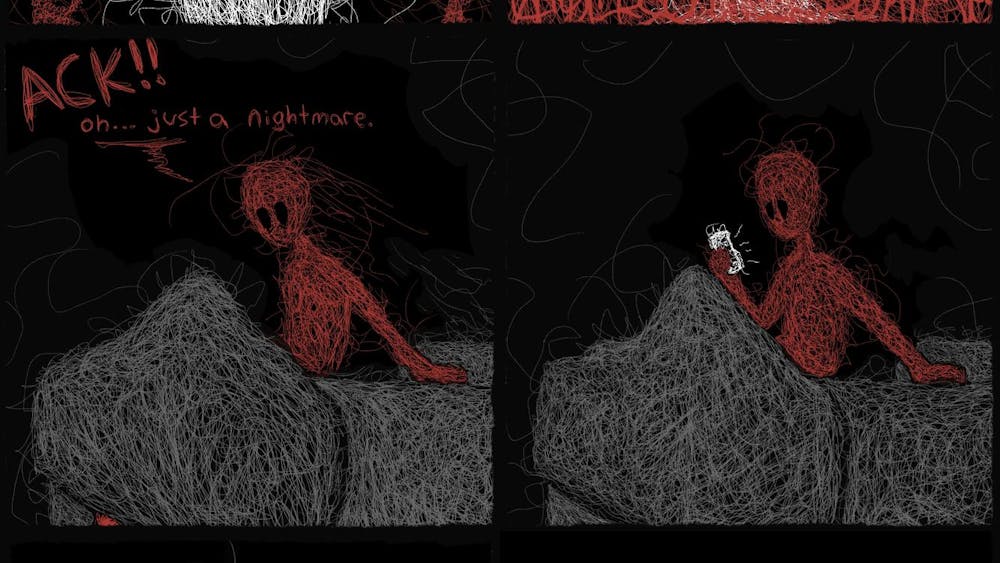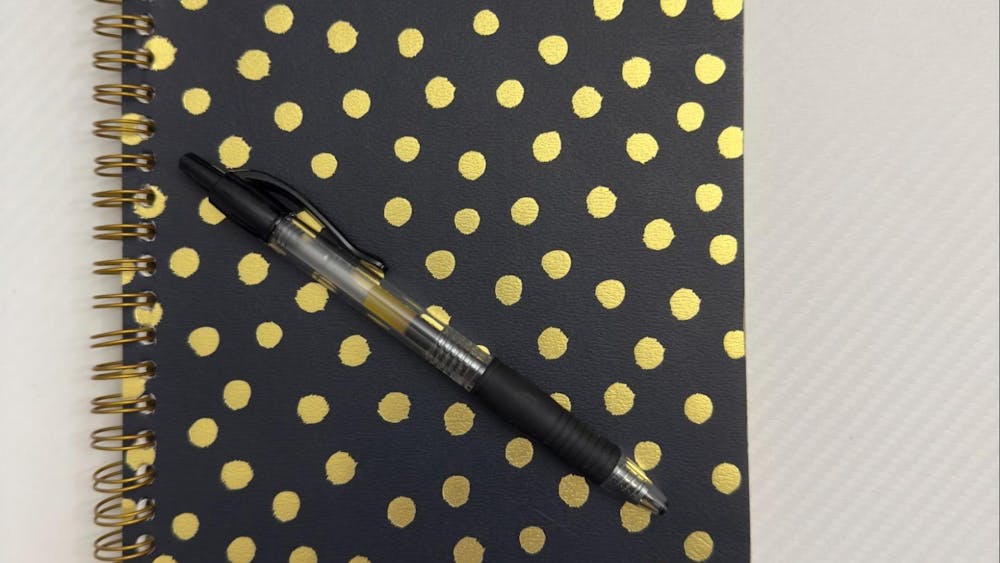From Mark Twain to Lil Wayne, obscenity, sex, drugs and alcohol have long existed in the fabric of American literature and the lives of those who wrote it.
Though today, one merely has to turn on the radio or prime time television to get their fix, 60 years ago American literary luminaries like Allen Ginsberg, Jack Kerouac and Charles Bukowski were inspiring writers across the country to embrace their inner rebel, in what is known as the Beat movement.
Eastern Michigan University lecturer Dr. David Calonne has spent most of his life reading and studying the American beat writers and the author who inspired them.
Last week Calonne released his second collection of unpublished works by Bukowski, entitled “Absence of the Hero.” He has published two other books on Bukowski, including a previous collection of essays and short stories entitled “Portions from a Wine-Stained Notebook,” released in 2008.
Calonne’s interest in Bukowski actually stems from his interest in another author, William Saroyan, who inspired Bukowski and other Beat writers. Calonne identified with Saroyan because they both come from an Armenian-American background and lived in California.
Calonne would eventually write his dissertation on Saroyan’s influence on the Beat writers, including Bukowski, which was published in the early ‘80s.
Though Calonne’s first introduction to Bukowski occurred when he was an undergrad, it grew naturally from his fascination with Saroyan.
“When I was an undergraduate at UCLA I saw a documentary about Bukowski and I was quite electrified by him,” Calonne said. “I didn’t know about him – this was in the early ‘70s. And I started to read his work, and I became very fond of it. It turns out that in fact Bukowski was also influenced by Saroyan.”
“What intrigued me was basically that Bukowski was writing about these Californian characters, as Saroyan was, but mainly in Los Angeles,” he said. “But he was doing it in a very original way.”
Calonne’s passion for Bukowski grew as he worked his way through the author’s catalogue of work, and gradually he began amassing a collection of unpublished works that spanned the author’s entire career and includes a couple of hundred unpublished essays and stories.
“I discovered that although Bukowski was very prolific – he had published fifty books – there was a large amount of his writing that had not been published before,” Calonne said. “So I started to collect this stuff because I was fascinated by it.”
His passion for Bukowski’s work led to a chance encounter in 1996, when Calonne gave a lecture at University of California, Berkeley about Saroyan’s influence on Bukowski. In the audience was Lawrence Ferlinghetti, owner of City Lights bookstore in San Francisco.
A poet and a published based in San Francisco, Ferlinghetti had released work by Kerouac, Burroughs and other prominent Californian authors.
He is probably best known for publishing Ginsberg’s controversial poem “Howl” and for his involvement the subsequent obscenity trial that would set the precedent for determining whether a book was obscene, a major issue of First Amendment rights in the 1950s.
Years later Calonne pitched an idea to City Lights for a collection of Bukowski’s unpublished works. The first collection, “Portions of a Wine-Stained Notebook,” was released to much acclaim in 2008, and has since been translated into Italian, Spanish, Czech and Japanese.
Because of the success of the first book, City Lights approached Calonne about releasing a second collection. Released last week, “Absence of the Hero” spans almost fifty years of Bukowski’s career, including some of his earliest short stories and one of his last essays – which have never been collected in a book before now.
The new book has already been warmly embraced by scholars and lit junkies who are excited to finally read some of Bukowski’s work that few have had access to in the past. The most unexpected praise, though, comes from Tom Waits.
The iconic musician – whose life and music reflects Bukowski’s themes of sex, booze and gambling – provided the following blurb for the book: “He loads his head full of coal, and diamonds shoot out of his finger tips. What a trick. The mole genius has left us with another digest. It’s a full house – read ‘em and weep.”
Bukowski and other Beat writers have been influencing pop culture for over half a century; and with themes of identity, freedom and ideals expressed by the counter-culture movement – including anti-militarism, anti-racism and pro-environmentalism – it’s easy to imagine young people being attracted to Bukowski’s work for generations to come.
“There were obvious excesses and mistakes in the ‘60s,” Calonne said. “But that was an effort to find an alternative to the kind of empty and sterile American Wonder bread culture.”
“In the ‘60s there was this real collision, I think, in retrospect, of this sort of plastification of America and – I don’t want to romanticize this because Bukowski was a city man, basically – what is natural, what is organic.”
With “Absence of the Hero” out now, Calonne will turn his attention to starting work on a third collection with City Lights, and has considered writing a book about Bukowski’s life. In addition to writing and editing, Calonne frequently speaks at universities across the world on Bukowski and Saroyan.
In 2009 he taught a seminar on Saroyan at the University of Chicago; that same year he served as the head examiner for a doctoral dissertation on Bukowski at the University of Barcelona and was invited to give a lecture at Bukowski’s hometown of Andernach, Germany.









